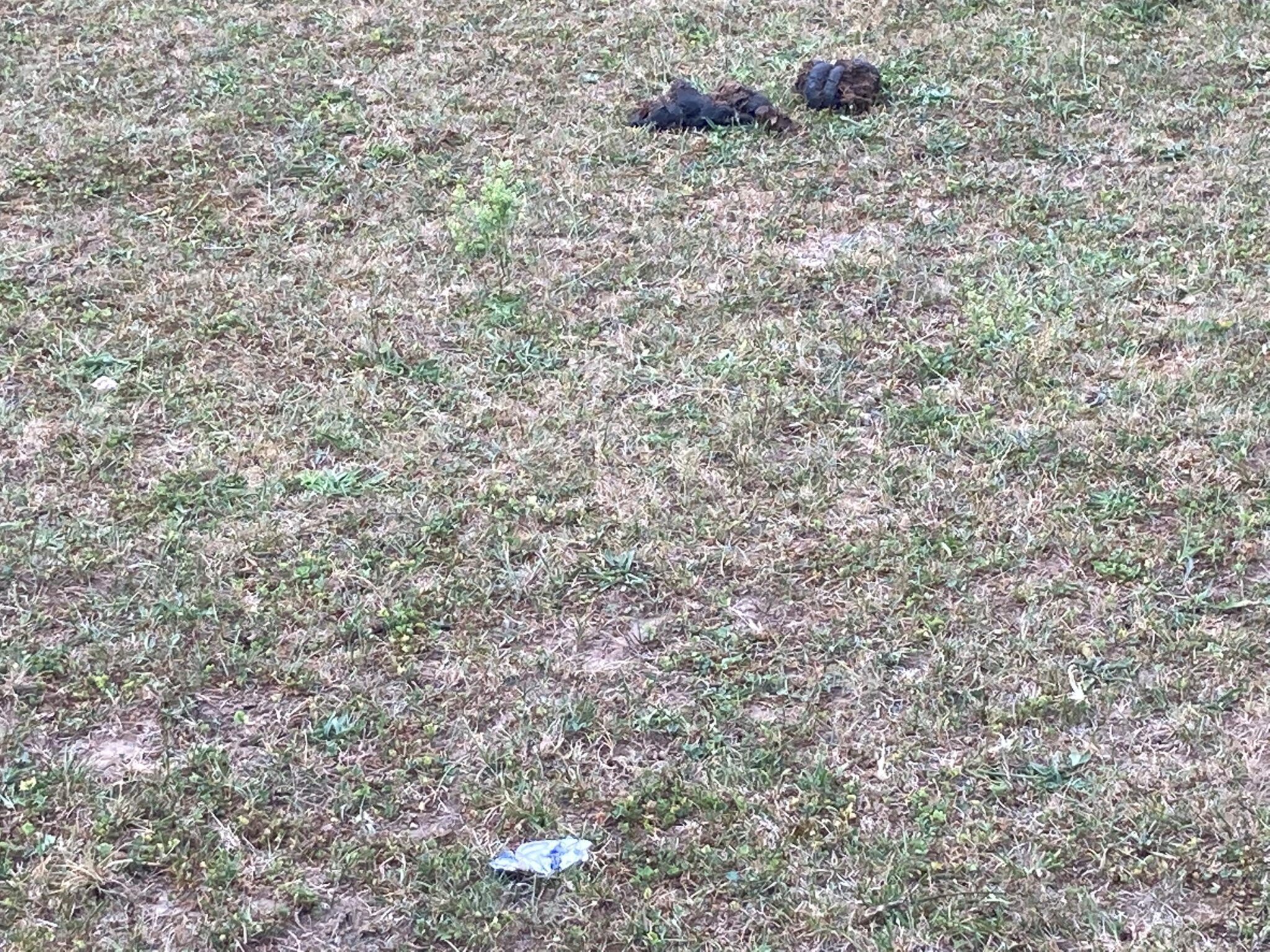This past week warm late-spring temperature and lack of moisture was apparent in Indiana. Unfortunately, the forecast indicates more of the same for the next ten days. Having livestock graze a pasture to the level that it looks like a golf course putting green has long term consequences that are not good for the wellbeing of the forages in the pasture. Meristems are where cell initiation, continued division, and elongation occurs. When close grazing happens, meristems cannot affectively produce what would be the next growth to graze. In time, less productive plants like Kentucky bluegrass and white Dutch white that can take close grazing because the meristems are at or slightly below the soil surface will increase and troublesome weeds may begin to appear and become dominant, too. There are long term consequences to the livestock, too, if they cannot get a full meal each day.

If plants could cry out, they would yell “Stop” when overgrazing begins to occur. Note the visible manure in the upper center and the crushed aluminum can in the lower center of the photograph. If the pasture was properly grazed, the manure and aluminum can would not have been visible at the distance that the photograph was taken. (Photo Credit: Keith Johnson)
Here are some considerations to help stretch the forage supply that remains in a pasture, protect future plant productivity, and improve the wellbeing and productivity of livestock, too.
- Employ rotational stocking.
- Provide clean, cool water to reduce heat stress and maintain herd and flock health.
- Monitor the body condition of livestock as an indicator of nutritional status.
- Creep feed calves for near normal weaning weights.
- Early wean late winter- and spring-born calves to take pressure off both cows and pastures.
- Pregnancy check and market cull cows earlier than normal to reduce feed needs.
- Determine if poisonous plants are in overgrazed pastures and hay fields, and determine best control options.
- Inventory hay and other feed resources and determine whether future purchases will be needed.
- Analyze hay and silage for nutrient profiles to help determine what supplemental feeds will provide a balanced ration.
- Use alternative feeds to supplement and stretch forage supplies.
- Limit hay access time to stretch hay supplies.
- Limit feed a nutrient dense diet to stretch forage supplies.
- Graze corn residues and stockpiled forages if available in the fall to reduce harvested feed needs.
A Purdue Extension publication was developed that provides details for each bullet point (ID-528 When Forages are in Short Supply Because of Drought (purdue.edu). While the emphasis is on beef cattle, there are many components of the publication that have value for all livestock species. Review the information in the publication now so a plan can be developed if it needs to be put into action. Doing nothing, is not a wise plan.
Listen carefully. Your forages may be crying out “Don’t overgraze if you want to see us next year!”.


